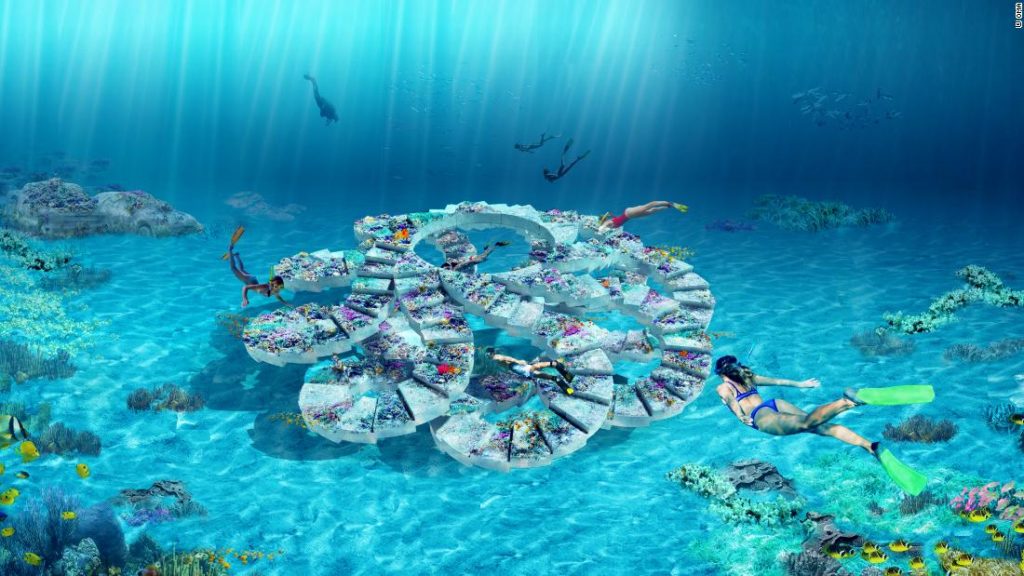Starting next year, Miami Beach visitors looking for their next art pilgrimage will be heading to the ocean floor.
ReefLine, an underwater public sculpture park that is designed to serve as a vibrant artificial reef, will open its first permanent installations in December 2021. Though only the first mile will be completed by that time, eventually, the public art project will run seven miles long, echoing the experience of traveling Manhattan’s High Line, but with snorkel fins.

The next awe-inspiring art experience is set to open on the ocean floor. Credit: © OMA
The idea came about when the project’s founder and art director, Ximena Caminos of BlueLab Preservation Society, learned that artificial reefs could be deposited in the waters of South Beach to aid in replenishing its coral population.
“I thought, ‘What if we created a reef designed by artists?'” said Caminos over email. “I’ve always been interested in how we can combine art and science to address issues of sustainability.”
The team behind the ReefLine hopes to mitigate some of the damage to Florida’s coastline by offering a new home for new organisms to flourish. The structure will consist of concrete, modular units, with site-specific art installations peppering its length from South Beach to the north. It is being designed by Shohei Shigematsu of the architecture firm OMA, along with a team of marine biologists, researchers and coastal engineers.
“The team has to be cross-disciplinary,” said Caminos. “Artists, architects, scientists, preservationists and city officials are coming together to create this underwater sculpture garden that will form the artificial reef, helping to foster the regrowth of the area’s destroyed coral and enhance coastal resilience.”
Art to save the oceans
In recent years, the art and design worlds have brought attention to the critical future that coral reefs face. In 2019, Pantone named Living Coral its color of the year, warning that the lively hue is disappearing from the ocean’s floors, as rising water temperatures have increasingly bleached the colonies white.

Visitors to South Beach will be able to snorkel along the length of the ReefLine to see its site-specific installations and growing coral life. Credit: © OMA
That same year, conservationist and underwater sculptor Jason deCaires Taylor unveiled a responsive public sculpture, “Ocean Siren” off the coast of Queensland, Australia, that changes color as ocean water temperatures fluctuate.

Leandro Erlich’s “Concrete Coral” will be one of twoundersea installations to be unveiled next December. Credit: © Leandro Erlich Studio
In the project’s next stage, installations by Brazilian artist Ernesto Neto and Argentinian artist Agustina Woodgate will be revealed.
As for the other artists who will exhibit on the sea floor, Caminos said that ReefLine is seeking to work with people whose art “relates and responds to the environment and raises awareness about the urgent issues facing our planet.”
Overall, she hopes that visitors who swim along the ReefLine will find the experience to be magical. “(It’s) a totally different way of experiencing art,” she said. “The water will also provide a change in perspective and gravity. Architects and designers are very excited by those opportunities that shift perspectives.”
You may also like
-
UK coronavirus variant has been reported in 86 countries, WHO says
-
NASA technology can help save whale sharks says Australian marine biologist and ECOCEAN founder, Brad Norman
-
California Twentynine Palms: Explosives are missing from the nation’s largest Marine Corps base and an investigation is underway
-
Trump unhappy with his impeachment attorney’s performance, sources say
-
Lunar New Year 2021: Ushering in the Year of the Ox

